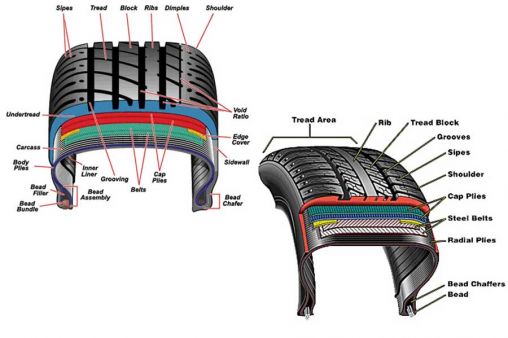Tired Tires: Keeping Your Tires In Good Condition
Posted by admin at 26 May 2015, at 19 : 34 PM

The condition of your tires can be a great indicator as to the general condition of your car. Tires should not be tired tires, but should be inspected on a regular basis, ideally every 6000 to 7000 miles, to determine excessive wear. Tire problems are the leading cause of breakdowns when on the road. The tire pressure should be checked with a tire gauge monthly. Besides over inflation and under inflation there can be other reasons for unusual tire wear including ball joints, struts, shocks, front alignment, springs, overloading, faulty balance, and faulty suspension.
The first thing to do is check the proper tire pressure for your auto. This information is usually found in the owner’s manual or possibly on a sticker in the door jamb on the driver’s side. The tire pressure on the tire’s sidewalls reflects the maximum, not the recommended pressure. It is very important to pay attention to proper tire inflation. Proper inflation extends the life of the tire, gives you better control of the vehicle, and improves gas mileage.
Overinflation of tires will cause excessive wear on the center treads of the tire. This can be remedied by letting the sir out according to what your manual specifies. A car owner will sometimes over inflate the tire to get it to run longer when a leak is suspected. If both edges are showing wear, undernflation is usually the culprit, and you will have to add more air. This problem can cause skidding. If you have a front wheel drive car, and this wear pattern occurs, rotate the tires more often.
You should have the front end of the car aligned if one side of the tire shows excessive wear. This is caused by the wheel’s tilting incorrectly, and the wheel should be aligned. You should also have a front end alignment if you see uneven wear on the treads, or bald spots, cupping or scalloping. Worn shocks or struts, wheel bearings, ball joints and bushings can also cause cupping. Professional wheel alignment is also required if the outside or inside of the tire wears more quickly than the rest of the tire. If you note your front tires show more wear than the rear, it is also a good idea to get an alignment. Don’t be tempted to purchase new tires until you find the cause of your present tire problems, as the same situation will occur with the new ones.
Potholes can also cause weakening of the sidewalls, so be aware as sidewalls provide tire stability. Check the tires also for tiny cracks, nails, and damage from hitting a curb. There is the old practice of inserting a penny between the tire treads and if it extends to Lincoln’s head, you have enough tread. Anything less and the tire or tires should be replaced. If you notice weird noises, it is probably time to replace the tires. Sometimes just changing your driving habits will result in better tire performance.
